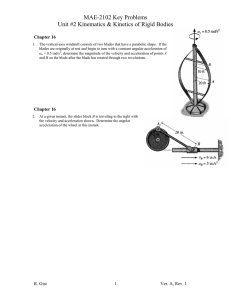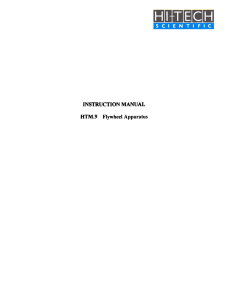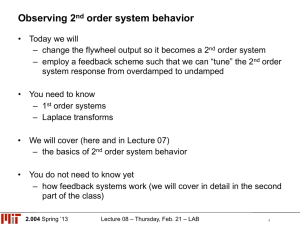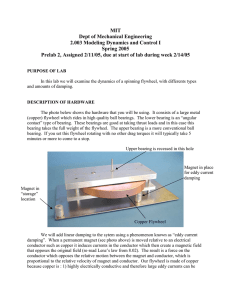Homework Set 11 E PH 112 – 10
advertisement
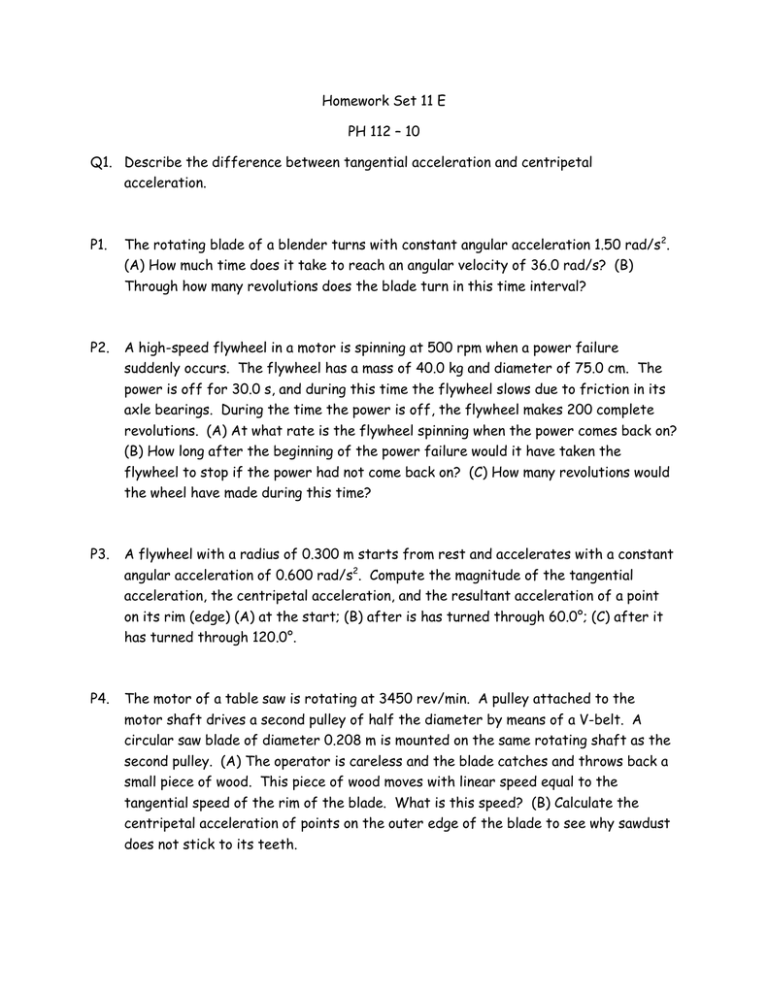
Homework Set 11 E PH 112 – 10 Q1. Describe the difference between tangential acceleration and centripetal acceleration. P1. The rotating blade of a blender turns with constant angular acceleration 1.50 rad/s2. (A) How much time does it take to reach an angular velocity of 36.0 rad/s? (B) Through how many revolutions does the blade turn in this time interval? P2. A high-speed flywheel in a motor is spinning at 500 rpm when a power failure suddenly occurs. The flywheel has a mass of 40.0 kg and diameter of 75.0 cm. The power is off for 30.0 s, and during this time the flywheel slows due to friction in its axle bearings. During the time the power is off, the flywheel makes 200 complete revolutions. (A) At what rate is the flywheel spinning when the power comes back on? (B) How long after the beginning of the power failure would it have taken the flywheel to stop if the power had not come back on? (C) How many revolutions would the wheel have made during this time? P3. A flywheel with a radius of 0.300 m starts from rest and accelerates with a constant angular acceleration of 0.600 rad/s2. Compute the magnitude of the tangential acceleration, the centripetal acceleration, and the resultant acceleration of a point on its rim (edge) (A) at the start; (B) after is has turned through 60.0°; (C) after it has turned through 120.0°. P4. The motor of a table saw is rotating at 3450 rev/min. A pulley attached to the motor shaft drives a second pulley of half the diameter by means of a V-belt. A circular saw blade of diameter 0.208 m is mounted on the same rotating shaft as the second pulley. (A) The operator is careless and the blade catches and throws back a small piece of wood. This piece of wood moves with linear speed equal to the tangential speed of the rim of the blade. What is this speed? (B) Calculate the centripetal acceleration of points on the outer edge of the blade to see why sawdust does not stick to its teeth.
